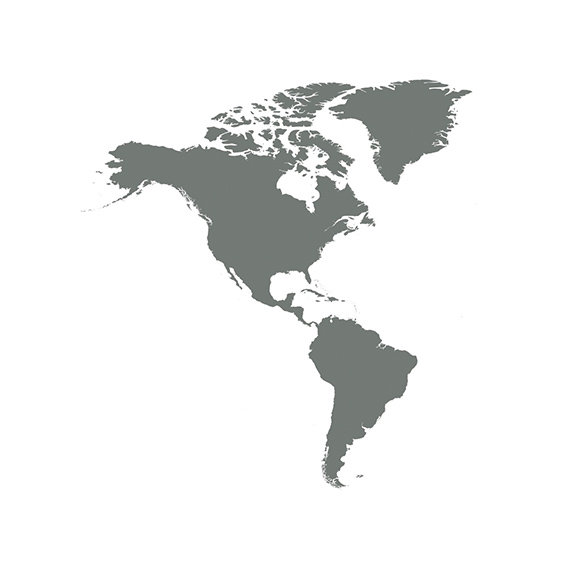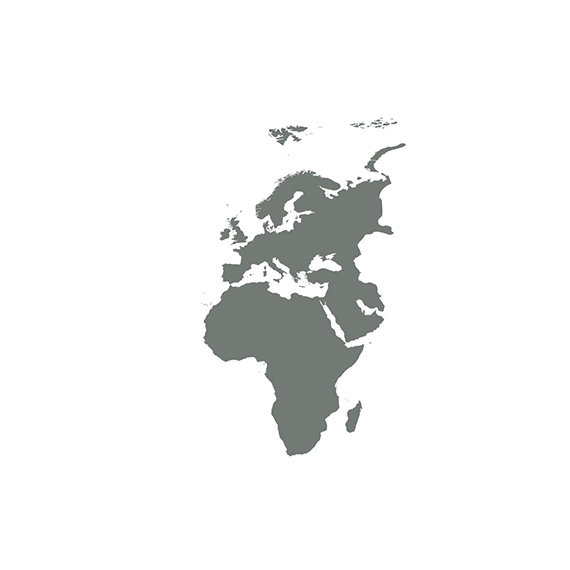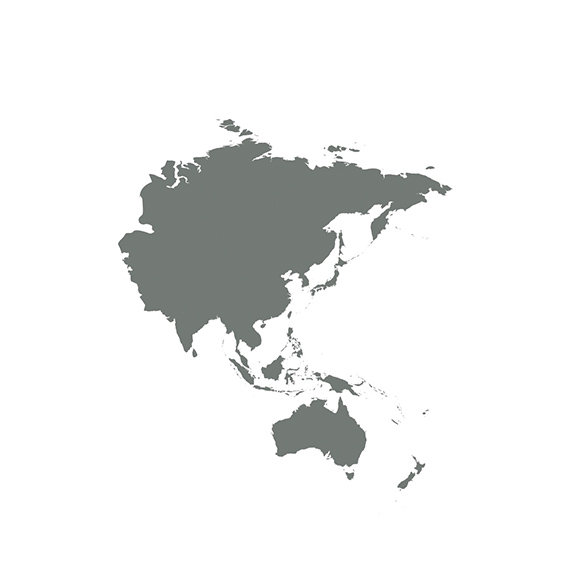Microsoft cares about the sustainable, safe, and responsible end-of-life management of our consumer branded devices, batteries, and packaging.
We join forces with recycling organizations and collection schemes, and work with our supply chain partners to facilitate the responsible return and end-of-life management of our devices, batteries, and packaging.
Ready for a new device? Learn about ways to your old device, batteries, and packaging, below. Please do not dispose of your old device and/or its batteries in your household garbage can or recycling bin.
Global end-of-life programs for devices, batteries, and packaging
Microsoft offers recycling programs for any individual who wants to recycle a Microsoft-branded consumer product, its battery and/or its packaging.In certain jurisdictions in the United States (*), Microsoft accepts devices from other brands for recycling purposes.Under the image below, please choose your respective region, then select your country from the drop-down menu to learn more about Microsoft’s recycling programs.If no information is found under your country, the program is not yet available. Please check again soon, as we continue to expand the programs to cover more countries.

AMERICAS
-
Compliance Programs
Devices (WEEE) -
Alberta
Compliance Programs
Devices (WEEE)
Takeback Programs
Mailback for Devices (WEEE) and Packaging
Battery RecyclingBritish Columbia
Compliance Programs
Devices (WEEE)
Battery
Packaging
Takeback Programs
Mailback for Devices (WEEE) and Packaging
Battery RecyclingManitoba
Compliance Programs
Devices (WEEE)
Battery
Packaging
Takeback Programs
Mailback for Devices (WEEE) and Packaging
Battery RecyclingNew Brunswick
Compliance Programs
Devices (WEEE)
Takeback Programs
Mailback for Devices (WEEE) and Packaging
Battery RecyclingNewfoundland and Labrador
Compliance Programs
Devices (WEEE)
Takeback Programs
Mailback for Devices (WEEE) and Packaging
Battery RecyclingNorthwest Territories
Compliance Programs
Devices (WEEE)
Takeback Programs
Mailback for Devices (WEEE) and Packaging
Battery RecyclingNova Scotia
Compliance Programs
Devices (WEEE)
Takeback Programs
Mailback for Devices (WEEE) and Packaging
Battery RecyclingNunavut
Takeback Programs
Mailback for Devices (WEEE) and Packaging
Battery RecyclingOntario
Devices (WEEE)
Battery
Packaging
Takeback Programs
Mailback for Devices (WEEE) and Packaging
Battery RecyclingPrince Edward Island
Compliance Programs
Devices (WEEE)
Battery
Takeback Programs
Mailback for Devices (WEEE) and Packaging
Battery RecyclingQuebec
Compliance Programs
Devices (WEEE)
Battery
Packaging
Takeback Programs
Mailback for Devices (WEEE) and Packaging
Battery RecyclingSaskatchewan
Compliance Programs
Devices (WEEE)
Packaging
Takeback Programs
Mailback for Devices (WEEE) and Packaging
Battery RecyclingYukon
Compliance Programs
Devices (WEEE)
Takeback Programs
Mailback for Devices (WEEE) and Packaging
Battery Recycling -
-
Alabama
Takeback Programs
Mailback for Devices (WEEE) and Packaging
Battery RecyclingAlaska
Takeback Programs
Mailback for Devices (WEEE) and Packaging
Battery RecyclingArizona
Takeback Programs
Mailback for Devices (WEEE) and Packaging
Battery RecyclingArkansas
Takeback Programs
Mailback for Devices (WEEE) and Packaging
Battery RecyclingCalifornia
Compliance Programs
Devices (WEEE)
Battery
Takeback Programs
Mailback for Devices (WEEE) and Packaging
Battery RecyclingColorado
Takeback Programs
Mailback for Devices (WEEE) and Packaging
Battery RecyclingConnecticut
Compliance Programs
Devices (WEEE)
Takeback Programs
Mailback for Devices (WEEE) and Packaging
Battery RecyclingDelaware
Takeback Programs
Mailback for Devices (WEEE) and Packaging
Battery RecyclingDistrict of Columbia
Compliance Programs
Devices (WEEE)
Battery
Takeback Programs
Mailback for Devices (WEEE) and Packaging
Battery RecyclingFlorida
Takeback Programs
Mailback for Devices (WEEE) and Packaging
Battery RecyclingGeorgia
Takeback Programs
Mailback for Devices (WEEE) and Packaging
Battery RecyclingHawaii
Compliance Programs
Devices (WEEE)
Takeback Programs
Mailback for Devices (WEEE) and Packaging
Battery RecyclingIdaho
Takeback Programs
Mailback for Devices (WEEE) and Packaging
Battery RecyclingIllinois
Compliance Programs
Devices (WEEE)
Takeback Programs
Mailback for Devices (WEEE) and Packaging
Battery RecyclingIndiana
Compliance Programs
Devices (WEEE)
Takeback Programs
Mailback for Devices (WEEE) and Packaging
Battery RecyclingIowa
Takeback Programs
Mailback for Devices (WEEE) and Packaging
Battery RecyclingKansas
Takeback Programs
Mailback for Devices (WEEE) and Packaging
Battery RecyclingKentucky
Takeback Programs
Mailback for Devices (WEEE) and Packaging
Battery RecyclingLouisiana
Takeback Programs
Mailback for Devices (WEEE) and Packaging
Battery RecyclingMaine
Compliance Programs
Devices (WEEE)
Takeback Programs
Mailback for Devices (WEEE) and Packaging
Battery RecyclingMaryland
Compliance Programs
Devices (WEEE)
Battery
Takeback Programs
Mailback for Devices (WEEE) and Packaging
Battery RecyclingMassachusetts
Takeback Programs
Mailback for Devices (WEEE) and Packaging
Battery RecyclingMichigan
Compliance Programs
Devices (WEEE)
Takeback Programs
Mailback for Devices (WEEE) and Packaging
Battery RecyclingMinnesota
Compliance Programs
Devices (WEEE)
Battery
Takeback Programs
Mailback for Devices (WEEE) and Packaging
Battery RecyclingMississippi
Takeback Programs
Mailback for Devices (WEEE) and Packaging
Battery RecyclingMissouri
Compliance Programs
Devices (WEEE)
Takeback Programs
Mailback for Devices (WEEE) and Packaging
Battery RecyclingMontana
Takeback Programs
Mailback for Devices (WEEE) and Packaging
Battery RecyclingNebraska
Takeback Programs
Mailback for Devices (WEEE) and Packaging
Battery RecyclingNevada
Takeback Programs
Mailback for Devices (WEEE) and Packaging
Battery RecyclingNew Hamsphire
Takeback Programs
Mailback for Devices (WEEE) and Packaging
Battery RecyclingNew Jersey
Compliance Programs
Devices (WEEE)
Takeback Programs
Mailback for Devices (WEEE) and Packaging
Battery RecyclingNew Mexico
Takeback Programs
Mailback for Devices (WEEE) and Packaging
Battery RecyclingNew York
Compliance Programs
Devices (WEEE)
Battery
Takeback Programs
Mailback for Devices (WEEE) and Packaging
Battery RecyclingNorth Carolina
Compliance Programs
Devices (WEEE)
Takeback Programs
Mailback for Devices (WEEE) and Packaging
Battery RecyclingNorth Dakota
Takeback Programs
Mailback for Devices (WEEE) and Packaging
Battery RecyclingOhio
Takeback Programs
Mailback for Devices (WEEE) and Packaging
Battery RecyclingOklahoma
Compliance Programs
Devices (WEEE)
Takeback Programs
Mailback for Devices (WEEE) and Packaging
Battery RecyclingOregon
Compliance Programs
Devices (WEEE)
Takeback Programs
Mailback for Devices (WEEE) and Packaging
Battery RecyclingPennsylvania
Compliance Programs
Devices (WEEE)
Takeback Programs
Mailback for Devices (WEEE) and Packaging
Battery RecyclingRhode Island
Compliance Programs
Devices (WEEE)
Takeback Programs
Mailback for Devices (WEEE) and Packaging
Battery RecyclingSouth Carolina
Compliance Programs
Devices (WEEE)
Takeback Programs
Mailback for Devices (WEEE) and Packaging
Battery RecyclingSouth Dakota
Takeback Programs
Mailback for Devices (WEEE) and Packaging
Battery RecyclingTennessee
Takeback Programs
Mailback for Devices (WEEE) and Packaging
Battery RecyclingTexas
Compliance Programs
Devices (WEEE)
Takeback Programs
Mailback for Devices (WEEE) and Packaging
Battery RecyclingUtah
Compliance Programs
Devices (WEEE)
Takeback Programs
Mailback for Devices (WEEE) and Packaging
Battery RecyclingVermont
Compliance Programs
Devices (WEEE)
Takeback Programs
Mailback for Devices (WEEE) and Packaging
Battery RecyclingVirginia
Compliance Programs
Annual Reporting (PDF)
Devices (WEEE)
Takeback Programs
Mailback for Devices (WEEE) and Packaging
Battery RecyclingWashington
Compliance Programs
Devices (WEEE)
Takeback Programs
Mailback for Devices (WEEE) and Packaging
Battery RecyclingWest Virginia
Compliance Programs
Devices (WEEE)
Takeback Programs
Mailback for Devices (WEEE) and Packaging
Battery RecyclingWisconsin
Compliance Programs
Devices (WEEE)
Takeback Programs
Mailback for Devices (WEEE) and Packaging
Battery RecyclingWyoming
Takeback Programs
Mailback for Devices (WEEE) and Packaging
Battery Recycling

EMEA
-
Compliance Programs
Devices (WEEE)
Battery
Packaging Enterprise
Packaging Household
Takeback Programs
Mailback for Devices (WEEE) and Packaging
-
Compliance Programs
Devices (WEEE)
Battery
Packaging Enterprise
Packaging Household
Takeback Programs
Mailback for Devices (WEEE) and Packaging -
Compliance Programs
Devices (WEEE)
Battery
Packaging
Takeback Programs
Mailback for Devices (WEEE) and Packaging -
Compliance Programs
Devices (WEEE)
Battery
Packaging
Takeback Programs
Mailback for Devices (WEEE) and Packaging -
Compliance Programs
Devices (WEEE)
Battery
Packaging
Takeback Programs
Mailback for Devices (WEEE) and Packaging -
Compliance Programs
Devices (WEEE)
Battery
Packaging
Takeback Programs
Mailback for Devices (WEEE) and Packaging -
Compliance Programs
Devices (WEEE)
Battery
Takeback Programs
Mailback for Devices (WEEE) and Packaging -
Compliance Programs
Devices (WEEE)
Battery
Packaging
Takeback Programs
Mailback for Devices (WEEE) and Packaging -
Compliance Programs
Devices (WEEE)
Battery
Packaging
Takeback Programs
Mailback for Devices (WEEE) and Packaging -
Compliance Programs
Devices (WEEE)
Battery
Packaging
Takeback Programs
Mailback for Devices (WEEE) and Packaging -
Compliance Programs
Devices (WEEE)
Battery Takeback Microsoft Germany
Battery Obligations Microsoft Ireland in Germany
Packaging
Takeback Enterprise
Takeback Programs
Mailback for Devices (WEEE) and Packaging -
Compliance Programs
Devices (WEEE)
Battery
Packaging
Takeback Programs
Mailback for Devices (WEEE) and Packaging -
-
-
-
Compliance Programs
Devices (WEEE)
Battery
Packaging
Takeback Programs
Mailback for Devices (WEEE) and Packaging -
Compliance Programs
Devices (WEEE)
Battery
Takeback Programs
Mailback for Devices (WEEE) and Packaging -
Compliance Programs
Devices (WEEE)
Battery
Packaging
Takeback Programs
Mailback for Devices (WEEE) and Packaging -
Compliance Programs
Devices (WEEE)
Battery
Packaging
Takeback Enterprise
Takeback Programs
Mailback for Devices (WEEE) and Packaging -
Compliance Programs
Devices (WEEE)
Battery
Packaging
Takeback Programs
Mailback for Devices (WEEE) and Packaging -
Compliance Programs
Devices (WEEE)
Battery
Packaging
Takeback Programs
Mailback for Devices (WEEE) and Packaging -
Compliance Programs
Devices (WEEE)
Battery
Packaging
Takeback Programs
Mailback for Devices (WEEE) and Packaging -
Compliance Programs
Devices (WEEE)
Battery
Packaging
Takeback Programs
Mailback for Devices (WEEE) and Packaging -
Compliance Programs
Devices (WEEE)
Battery
Packaging
Takeback Programs
Mailback for Devices (WEEE) and Packaging -
Compliance Programs
Devices (WEEE)
Battery
Packaging
Takeback Programs
Mailback for Devices (WEEE) and Packaging -
Compliance Programs
Devices (WEEE)
Battery
Packaging
Takeback Programs
Mailback for Devices (WEEE) and Packaging -
Compliance Programs
Devices (WEEE)
Packaging
Takeback Programs
Mailback for Devices (WEEE) and Packaging -
Compliance Programs
Devices (WEEE)
Battery
Packaging
Takeback Programs
Mailback for Devices (WEEE) and Packaging -
Compliance Programs
Devices (WEEE)
Battery
Packaging
Takeback Programs
Mailback for Devices (WEEE) and Packaging -
Compliance Programs
Devices (WEEE)
Battery
Takeback Programs
Mailback for Devices (WEEE) and Packaging -
Compliance Programs
Devices (WEEE)
Battery
Packaging
Takeback Programs
Mailback for Devices (WEEE) and Packaging

ASIA-PACIFIC
-
Compliance Programs
Devices (WEEE)
Battery
Packaging
Takeback Programs
Mailback for Devices (WEEE) and Packaging -
Takeback Programs
Mailback for Devices (WEEE) and Packaging -
-
Compliance Programs |コンプライアンス プログラム
Devices (WEEE) | デバイス (WEEE)
Battery | バッテリー
Packaging | パッケージ
Takeback Programs
Mailback for Devices (WEEE) and Packaging -
Takeback Programs
Mailback for Devices (WEEE) and Packaging -
-
-
Compliance Programs
Devices (WEEE)
Battery
Takeback Programs
Mailback for Devices (WEEE) and Packaging
(*) The District of Columbia and New York State require manufacturers to meet their recycling obligations by accepting, on a one-to-one basis, covered devices branded by other producers, when they sell the same type of device to a person in that jurisdiction.
Investing in global end-of-life programs
-
Microsoft has taken the following approach to comply with the European Union's Directive on Waste Electrical and Electronic Equipment (WEEE) (2002/96/EC, also called "WEEE Directive") and its Recast (Directive 2012/19/EU) for Microsoft covered electrical and electronic equipment ("EEE"):
- Microsoft, where applicable, registers with national authorities in accordance with the requirements of each Member State and the EU and reports data to such Member States as required by the Directive.
- Microsoft provides information to reuse centers, treatment, and recycling facilities as required by each Member State and the WEEE Directive.
- Microsoft products are designed to promote recycling, reuse, and proper waste management.
- Microsoft products are labelled or stamped with the mark as shown below in accordance with European Standard EN 50419.
Disposal of Waste Electrical and Electronic Equipment (WEEE) and batteries
All products that are subject to the WEEE Directive shipped from August 13th, 2005 are compliant with the WEEE marking requirements. Such products are marked with the “crossed out wheelie bin” WEEE symbol in accordance with European Standard EN 50419.
For more information about where to drop off your waste batteries and electrical and electronic equipment, please contact your local city/municipality office, your household waste disposal service, or the shop where you purchased this product.
Email the Environmental Compliance team for additional information
Important information for generators of WEEE from private households:
- The proper disposal of WEEE by households will conserve natural resources (through re-use and recycling) and protect the environment and human health.
- In some cases, your city, municipality, or Member State may take enforcement action for improper disposal of WEEE.
- For more information regarding WEEE disposal options, please contact your local waste agency, municipal office, or visit your country’s government website.
-
The conformance standards for environmentally sound management of Waste Electrical and Electronic Equipment (WEEE) apply to all Microsoft internal business units and any third party contracted Suppliers, including, but not limited to, manufacturers, suppliers, or vendors (including their subcontractors), each considered a “Supplier” for purpose of this specification, that (1) performs services that generate WEEE (including waste Components, waste batteries and waste residuals); or (2) provides end-of-life management services. Covered services include, but are not limited to, hardware manufacturing; repair, refurbishment, and parts harvesting; recycling; or disposal.
Requirements include, but are not limited to:
- Obtain, hold, and maintain required certifications:
- Internationally recognized electronic waste management certification and registrations, including but not limited to R2 and e-Stewards; and,
- ISO 14001 Environmental Management System certification
- Comply with all applicable international and national laws, including laws pertaining to the transboundary movement of hazardous waste, such as Basel Convention.
- Conduct independent and/or third-party initial and recurring audits of their facilities and their Subcontractor facilities.
- Obtain, hold, and maintain required certifications:
-
Read about our Refurbished PC program which gives new life to used devices and helps communities around the world.
If you are a reuse or recycling facility needing information on how to recycle our products or to identify materials and components requiring selective treatment, email questions to our Environmental Compliance & Sustainability team.

Microsoft and the environment

Ecoprofiles

Our commitment to environmental sustainability



Follow Microsoft